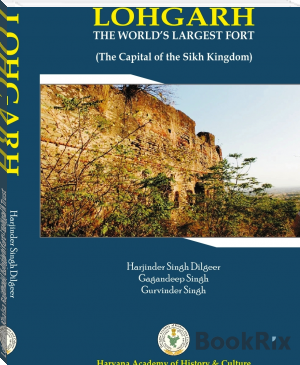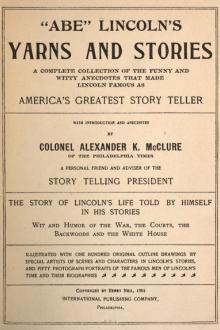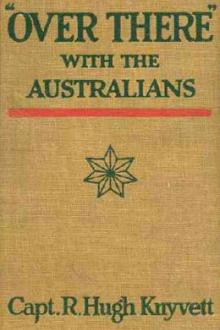Lohgarh - Khalsa Rajdhani, Lohgarh fort - Lohgarh Trust, S. Daljeet Singh Bajwa [early reader books .txt] 📗

- Author: S. Daljeet Singh Bajwa
Book online «Lohgarh - Khalsa Rajdhani, Lohgarh fort - Lohgarh Trust, S. Daljeet Singh Bajwa [early reader books .txt] 📗». Author S. Daljeet Singh Bajwa
In the third week of July 1714, the Sikh soldiers put up their camps in Ardun, Mehluk, and Malkiaat villages (in the lower Shivalik hills). When
the Mughal army got this news, they attacked the Sikh camp; seventy Sikhs and a large number of Mughal soldiers were killed in these skirmishes. In the third week of August 1714, Baj Singh’s army was again attacked by the Governor of Sarhind. Instead of fighting, the Sikhs preferred to move towards the hills.
It is possible that these attacks were led by Baj Singh. There is no further mention of Baj Singh’s army in any source except that he was killed along with Banda Singh, in Delhi, on 9 June 1716. To say that the record of the Mughal times (Akhbarat-I-Darbar-I-Mualla) might have misspelled or wrongly mentioned Binod Singh as Baj Singh is not true. Moreover, Baj Singh has been shown to fight all the time against the Mughal army. It proves that Baj Singh did not part from Banda Singh due to any differences; rather the Sikh generals themselves divided the Sikh army into two groups as a part of military strategy. So, it is wrong that Baj Singh left Banda Singh due to ‘differences’ and he joined hands with the Mughals. Besides Binod Singh’s name also does not appear in any Mughal record, source or concern (as referred to, about Binod Singh, in Ratan Singh Bhangu’s Prachin Panth Parkash).
Banda Singh in Uttrakhand / Kumaon Hills
In the beginning of August 1714, Banda Singh was present in the hills of the present Uttrakhand zone. According to the report of 10 August, the ruler of Srinagar was collaborating with Banda Singh. According to this report, Banda Singh had gone to Bareilly and Moradabad in accordance with the agreement with the Vanjaras.17 Hearing this, Baj Bahadur Chand, the ruler of Kumaon, sent his army to attack the Sikhs. This battle continued for three days, leading to a few losses on both sides. Baj Bahadur dispatched heads of 19 Sikhs killed in these skirmishes, to the Mughal Emperor; and the Raja wished that the Emperor would reward him with a royal letter, a robe of honour and a turban-decoration, and the Emperor fulfilled his wish.18 A report on 12 August mentions the number of the Sikhs killed at twenty.19
Banda Singh Again Returns To The Punjab
In the middle of August 1714, Banda Singh again returned from the Hindustan to the plains of the Punjab plains. According to Irvine, on 16 August 1714,20 a seven thousand strong force of the Sikhs attacked Ropar. Khwaja Mukarram, the deputy of Zain-ud-Din Ahmed Khan gave a tough fight to the Sikhs; as a result the Sikhs had to flee towards the high hills; two hundred Sikhs were killed in this battle.21
In December 1714, he put up his camps near Pinjore and Lakhat villages. On 5 December 1714, Banda Singh Bahadur reached Amboh near Pinjore22. At that time his wife Sahib Kaur and his son Ranjit Singh were also with him. As he was planning to launch an attack on Batala and Kalanaur, he decided to send his family to some safer place. He went to the village of Dhotay-Da-Tanda, also known as Tanda Dhota, (near Riasi in Jammu zone) and left his family in the care of Bhai Mehar Singh Dhoota; he also handed over the Guru Granth Sahib23 and Guru Gobind Singh’s Kirpan24 to his wife and asked her to take care of the relics. After this he began his march towards Gurdaspur.25
On 5 February 1715, the Emperor was told that the Sikh soldiers were encamped at village Lakhat (3 koh, i.e. about 10 kilometre from Sarhind). When Faujdar Khidmat Talab Khan26 received the information, he sent his Bakhshi with five thousand gunmen and arrow-shooters to chase the Sikhs. He also wrote to the hill rulers asking them not to allow the rebels enter their territories.27
In the third week of March 1715, the Sikh had gone from Sarhind to the hills towards Suket and Mandi. Their number was seven thousand cavalry and eight thousand infantry. They had the support of the ruler of Kehlur (Bilaspur) State. During this period, when the Sikh army was in Dun area, they had to fight a battle against the Mughal army led by Ramzani Begh, amil (an employee) of Fatah-Ulla-Khan. In this battle the Mughals suffered heavy losses.28
Banda Singh in the Punjab
At the end of February 1715, Banda Singh himself came down to the foothills and entered the Punjab; he attacked the Mughal posts and
cantonments and took away money, weapons and food. When the Emperor got the news, he sent mace-bearers (special messengers) to Abdus Samad Khan to take action.29
In the early days of March 1715, Banda Singh attacked Kalanaur, defeated Sohrab Khan and occupied the town. Batala and Raipur were the next to fall. The Faujdar of Lahore or the officials of the area around Batala-Kalanaur did not come to challenge Banda Singh.30
At that time, Abdus Samad Khan, the Governor of Lahore, was not present in the province and had gone to quell the rebellion of the Hussain Khan Kheshgi. (In the beginning of 1715, Hussain Khan Kheshgi had raised rebellion against the Mughal regime. Abdus Samad Khan himself led an army against Kheshgi. This battle continued for a couple of months. Finally, Kheshgi was killed. The Emperor granted the title of Said-ud-Daula (meaning: sword of the state) to Abdus Samad Khan).31
Endnotes
Akhbarat-i-Darbar-i-Mu’alla, entry of 3.1714 Akhbarat-i-Darbar-i-Mu’alla, entry of 3.1714 Akhbarat-i-Darbar-i-Mualla, an entry dated 3.1714. Akhbarat-i-Darbar-i-Mu’alla, entry of 4..1714 Akhbarat-i-Darbar-i-Mu’alla, entry of 5.1714 The report mentions this village/town as a pargana, but, now, in this area, there is no village with this Akhbarat-i-Darbar-i-Mu’alla, entry of 5.1714 In this area, there is no village named Dahona, however a village named Manakpur is there between Mohali and Tangori, about 35 kilometers from Sarhind). Akhbarat-i-Darbar-i-Mu’alla, entry of 6.1714 Ghulam, Mohyy-ud-din, Fatuhat Namah-i-Samadi, 156. Ghulam, Mohyy-ud-din, Fatuhat Namah-i-Samadi, p Ghulam, Mohyy-ud-din, Fatuhat Namah-i-Samadi, p 97 Akhbarat-i-Darbar-i-Mu’alla, entry of 3 July This story was concocted by Ratan Singh Bhangu in his work Prachin Panth Parkash.
There were two camps of the Mughal army in that zone: one at Jindbarhi and the other at Akhbarat-i-Darbar-i-Mu’alla, entries of 9 and 7.1714 It shows that the companions of Bhai Lakhi Rai Vanjara were present in Garhwal and Kumaon zones, and, in Bareilly and Moradabad areas as Akhbarat-i-Darbar-i-Mu’alla, entry of 8.1714 Akhbarat-i-Darbar-i-Mu’alla, entry of 8.1714 Irvine gives the date 16 Shaban 1126 Hijri but he calculates it as 26 At that time it was Julian calendar which should be 16 August; it seems he has calculated according to Gregorian calendar. Irvine, Later Mughals, Vol I, 311. Veena Sachdev: Revisiting Baba Banda Singh Bahadur and his time,; an article in Historical Geography of Baba Banda Singh Bahadur, edited by Amarjeet Singh, page It was that volume which had been granted After victory of Sirhind, the Sikhs had brought it from nanded to Sarhind. Since then it had been in the custody of Banda Singh. This sword had been given by Guru Gobind Singh to Banda Singh on 5 October 1708, at the time of his departure for the Desa Singh Multani, Ahwal Mutallaka Khandan Banda Singh Bahadur
(1800), p.22. Guru Kian Sakhian p. 27.
Some times in the last months of 1714, Zain-ud-Din Ahmed Khan, the Faujdar of Sarhind had been replaced with Khidmat Talab Akhbarat-i-Darbar-i-Mu’alla, entry of 2.1715 Akhbarat-i-Darbar-i-Mu’alla, entry of 23-24.2.1715. Akhbarat-i-Darbar-i-Mu’alla, entry of 3.1715 Akhbarat-i-Darbar-i-Mu’alla, entry of 3.1715. Khafi Khan, cit., p. 861.
Chapter 14
Battle of Gurdas Nangal and Arrest of Banda Singh Bahadur
On 14 March 1715, the Emperor received the news of the fall of Kalanaur and Batala. This frightened and angered the Emperor. The next day he sent a large army, under the command of Qamar-ud-Din (son of Mohammed Amin Khan, and father of Mir Mannu), to attack the Sikhs. Qamar-ud-Din left Delhi on 15 March. The Emperor also despatched Afrasiyab Khan Bahadur Khan-i-Dauran, Raja Udip Singh (Raja of Orchha), Raja Gopal Singh Bhadauria, Pirthi Chand and 300 swar mansabdars (those who had right to employ soldiers with horses, i.e. cavalry) to chase the Sikhs; besides, the Emperor ordered twelve thousand five hundred and fifty horsemen of his personal command to join crusade against the Sikhs.1
Siege of Gurdas Nangal
On the 19th of March 1715, the Emperor got news that the Banda Singh’s army was present in Majha area, at a distance of about Forty Koh (about one hundred and twenty-five km) from Lahore; and, all the government officials as well as other prominent persons had fled the area for fear of Banda Singh, and, the Sikhs had appointed their own officials in that area. When this news reached Abdus Samad Khan, he ordered all his soldiers to march towards that area which the Sikhs had occupied, hoping that Banda Singh too might be present there.
At that time, Banda Singh was present at the Fortress of Kot Mirza Jaan and was fortifying it. Kot Mirza Jaan was a village between Batala and Kalanaur; Karam Singh Historian believes that “Banda Singh chose this place from military strategy point of view; he (Banda Singh) knew
that had he chosen to fight near Batala and Kalanaur, then, in case of losing the battle against the Mughal army, the residents of these two towns would have blocked his way from escaping; and if the Mughals were defeated, the fleeing Mughal army would have found refuge in these towns; so, he was looking for a safer defensive post like that of the Fortress of Kot Mirza Jaan. Karam Singh believes that Banda Singh expected more possibility of defeat than victory. That is why he began repairing this Fortress. Banda Singh had repaired a major part of the inside of the Fortress but the outer walls and the moat were still not ready.
It seems that Karam Singh historian had not rightly assessed the situation. Mirza Jaan village (in between Bijliwal and Akarpura) is eight and a half kilometres from Batala, and, the distance from Kalanaur to Mirza Jan is fifteen kilometres. All the villages around Mirza Jaan i.e. Akarpura, Muridke, Kala Afghana and Fatehgarh Churian on one side, and, Satkoha and Dhariwal on the other side were totally Muslim villages. They were not supposed to help Banda Singh. But, the reality is that all the Muslims of the Punjab were afraid of Banda Singh, hence, there was least possibility that any civilian would try to block the passage of Banda Singh.
Now, when he received the news of the march of a huge Mughal army, under the command of Arif Khan, he decided to leave that area for a safer place from where he could fight against the invading army. Banda Singh marched towards Gurdas Nangal and took refuge in the Fortress-type mansion of Duni Chand Darwesh (later known as Gurdas Nangal Di Garhi), at Gurdas Nangal village, about six km from present town of Gurdaspur. Soon, the Mughal army too reached there and surrounded the Fortress from all the sides.
At that time Banda Singh had not more than five thousand soldiers with him. This mansion was not big enough to give place to more than a thousand persons; the rest had no choice but to try to flee by cutting the Mughal siege. So, about four thousand Sikhs began running for safety; but, due to the siege by the thousands of Mughal soldiers, most of them were slain, and only a small number of them were able to save
their lives.





Comments (0)